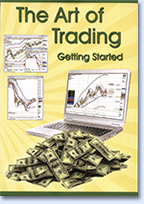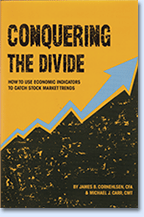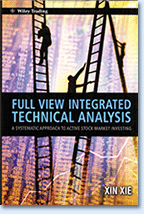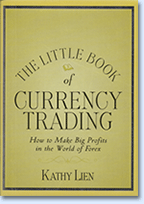Books For Traders
April 2011
- The Art Of Trading
- The Bond Book: Third Edition
- Conquering The Divide: How To Use Economic Indicators To Catch Stock Market Trends
- Full View Integrated Technical Analysis
- The Little Book of Currency Trading
- Trading Regime Analysis
Return to Contents

The Art Of Trading
(5-CD set $1,335, 2010) by
Craig Gordon, distributed by OnTheBallTrading.com.
These five CDs cover trader Gordon’s view of how the markets work, and what you need to know to make the most money trading them. The CDs follow a logical progression from the first disk about how to get started, through getting to know yourself, to the general trading environment, managing trades to the advanced concepts viewed as most profitable. The information on the set has been gathered from Gordon’s experience since his first trade in 1965. This set comes with a money-back guarantee.
Additional information: OnTheBallTrading.com
BACK TO LIST 
The Bond Book: Third
Edition
(428 pages, $35 hardcover, 2011, ISBN
978-0-07-166470-7) by Annette Thau, published by
McGraw-Hill.
The financial crisis of 2008 caused major disruptions to every sector of the bond market, and even the savviest investors were confused about the safety of their investments. This is a one-stop resource for investors, both bond and equity, looking for the latest information on this line of investing. This work presents strategies for making the best bond investing decisions while explaining how to assess risks and opportunities. Whether buying individual bonds, bond funds, exchange traded funds, or just looking for the safest bond funds, this is your book. Junk bonds and emerging market bonds are covered, as are the ways to buy Treasuries without paying a commission. This is a must-read for anyone who wants to enhance their fixed-income portfolio.
Additional information: mhprofessional.com
BACK TO LIST 
Conquering The Divide:
How To Use Economic Indicators To Catch Stock Market Trends
(162 pages, $34.95 hardcover, 2010, ISBN 978-1-934354-15-5) by
James B. Cornehlsen, CFA, and
Michael J. Carr, CMT, published by
W&A Publishing.
This book provides a look at a comprehensive, tested, understandable economy time series model. It presents documentation of the model’s validity. The authors lay out the model’s signals and indicators using statistical verification. They give details for a plan for risk assessment that shows you how to maximize returns, forecast inflation, and get out before the big declines.
Additional information: w-apublishing.com
BACK TO LIST 
Full View Integrated
Technical Analysis
(271 pages, $80 hardcover, 2011, ISBN
978-0-470-82579-2) by Xin Xie, published by John Wiley
& Sons.
This is a new approach for the experienced technical analyst. The system created here provides a full picture of market moving forces and offers unabridged coverage of market dynamics, which helps you understand the overall working of the market, rather than just independent trading opportunities. Author Xie takes a step toward harvesting the joint power of all the knowledge accumulated in market analyses. This guide is for all the technical analysts who are looking for an integrated approach to their trading techniques.
Additional information: wiley.com
BACK TO LIST 
The Little Book of
Currency Trading
(198 pages, $19.95 hardcover, 2011, ISBN
978-0-470-77035-1) by Kathy Lien, published by John
Wiley & Sons.
Currency trading was once dominated by global banks, hedge funds, and multinational corporations, but now, the foreign exchange market is accessible to traders and investors around the world. To make the most of this market, you need to know how it works. This guide shows you how to effectively trade and invest in today’s biggest markets. It describes many opportunities — from short-term price swings to long-term trends — and details the products that can help you succeed. Author Lien describes how to get started, what the common mistakes are, and much more. Filled with insights and practical advice, this guide opens the world of currency trading and investing to all of those interested in this area.
Additional information: wiley.com
BACK TO LIST 
Trading Regime
Analysis
(426 pages, $80 hardcover, 2009, ISBN
978-0-470-98785-8) by Murray Gunn, published by John
Wiley & Sons.
What trading regime analysis really works? Put another way, what is the holy grail of market analysis? Of course, there is no such thing, but if you knew the periods when trending or range trading behaviors were most likely to occur, your chances of success would increase. The fluctuations of rising and falling volatility of market cycles are driven by human emotions that can be anticipated by using technical market analysis. Existing methods of anticipating volatility cycles are examined, like candlesticks and Elliott wave, as are new areas like implied volatility curves and the trading regime indicator. Examples are given of how an appreciation of volatility conditions can enhance trading results. Included studies highlight the application that trading regime analysis has a broad array of market participants.
Additional information: wiley.com
BACK TO LIST